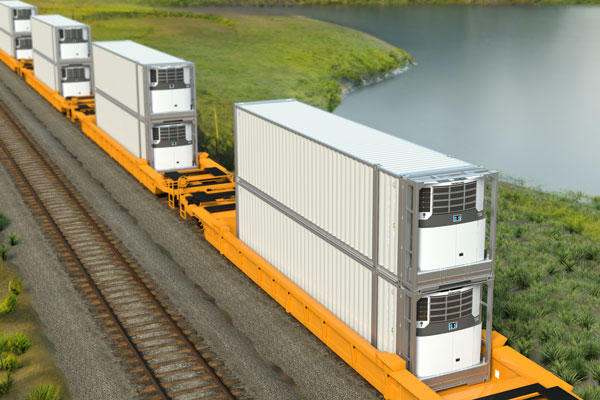Thermoking has introduced the Advancer S-DRC slimline rail unit. This unit showcases the most recent advances in temperature control technology for intermodal and freight rail applications. Replacing the SLXi-DRC, the new Advancer S-DRC will use the proven Precedent® S-Series engine and be the first slimline unit in North America to comply with all 50 states’ CARB Ultra-Low Emission Transport Refrigeration Unit (ULETRU) emissions criteria.
“Thermo King has designed custom rail solutions for our customers since 1948,” said Sam Doerr, Thermo King’s trailer portfolio leader. “The Advancer S-DRC is another example of Thermo King’s commitment to delivering smart, sustainable temperature-control solutions that help customers transition fleets to reduce their environmental impact and be compliant with the changing regulations in California.”

Driving cold chain decarbonization with solutions that satisfy regulations and lower emissions
The Advancer S-DRC’s improved operational efficiencies provide clients with a sustainable solution for their rail applications while lowering their overall cost of ownership.

- Fuel efficiency increased by 10% over the previous generation
- Next-generation transport temperature controller
- A slimline profile with a competitive 15-pallet capacity
- Smooth over-the-road transition simplifies cross-docking
- ThermoLite® solar panels come standard
- Integrated shore power.
Every Advancer S-DRC will be equipped with Thermoking’s TracKing® telematics to provide customers with critical security and performance data at no extra charge for the first 24 months. Telematics lets fleet owners monitor cargo temperature with immediate alarms on door openings, fuel loss, and more. Additionally, it offers improved management capabilities with predictive analytics and performance dashboards.
